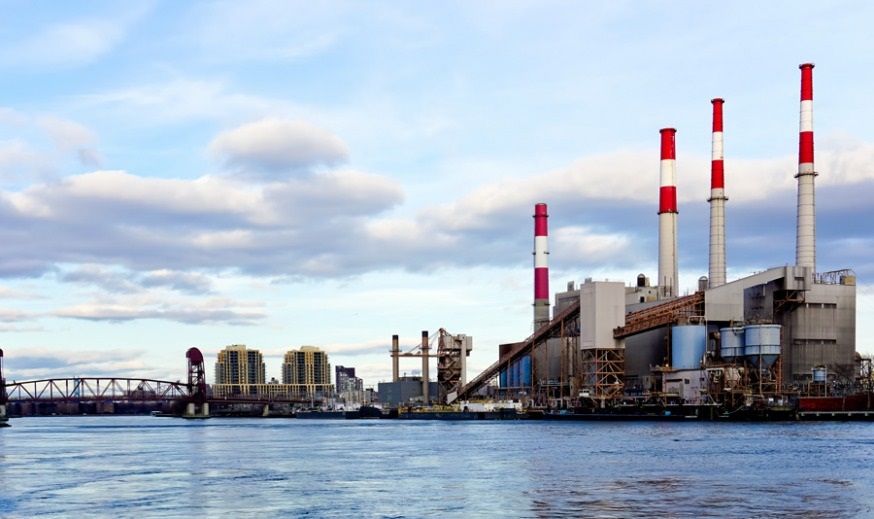
Ravenswood Generating Station (Rise Light & Power)
July 13, 2021 By Christian Murray
An innovative plan to transform the Ravenswood Generating Station into a renewable energy hub has the backing of NYCHA leaders as well as more than 1,000 residents from western Queens NYCHA developments.
The bold plan, supported by NAACP-NYCHA branch leaders, would see green energy from upstate New York transferred via an underwater cable to the Ravenswood plant in Queens. The energy would be generated by clean wind and solar.
The Ravenswood plant, owned by Rise Light & Power, provides more than 20 percent of the city’s generation capacity. The facility is located on 28 acres across the street from the Queensbridge Houses, the largest public housing development in North America.
The project could potentially end the plant’s reliance on fossil fuels. Currently, the plant is dependent on natural gas, with oil used occasionally.
The NYCHA leaders said the project provides an opportunity for the state to prioritize environmental justice and protect the health of residents.
“Environmental justice is a civil rights issue,” said Lynn Spivey, president of the NAACP-NYCHA branch. “For generations, communities of color have been forced to live next to toxic plants – poisoning the air they breathe, spreading illness and asthma, and limiting the spaces where their children can play.”
The underwater cable, which would be 115 miles long, is formally being referred to as the Catskills Renewable Connector. The line would run from south of Albany to the Ravenswood plant.
At full output, the CRC could supply approximately 15 percent of New York City’s electricity needs.
Rise Light & Power submitted the plan to the state’s Energy Research and Development Authority in May.
The project was submitted in response to a NYSERDA request for proposals to connect the five boroughs to renewable energy sources. NYSERDA is reviewing a series of proposals.
If the Ravenswood proposal is selected, Rise Light & Power expects construction to begin in 2023, with the connector to be fully operational by 2026.
The program would create more than 5,000 jobs.
Rise Light & Power said the CRC would lower CO2 emissions in New York State by 10 percent and 15 percent in New York City by 2030. The company says that it would also shrink the city’s carbon footprint by nearly 2 million tons – the equivalent of taking about 400,000 cars off the road.
Long-time western Queens NYCHA residents support the plan.
“As a born and raised member of the Ravenswood community, I can attest to the importance of this project and the many benefits it will bring,” said Carol Wilkins, NYCHA Residential Association President at Ravenswood Housing, in May.
“We have experienced the horrors of environmental injustice. We have lived under the shadows of the smokestacks. We now see the opportunity and hope offered by the Rise Light & Power’s Catskills Renewable Connector.”
One Comment

well if you don’t want to live under smoke stacks. use the money that you saved on the tax payers subsidized rent and buy a home in a stack free neighborhood. the lord helps those that helps THEMSELVES.